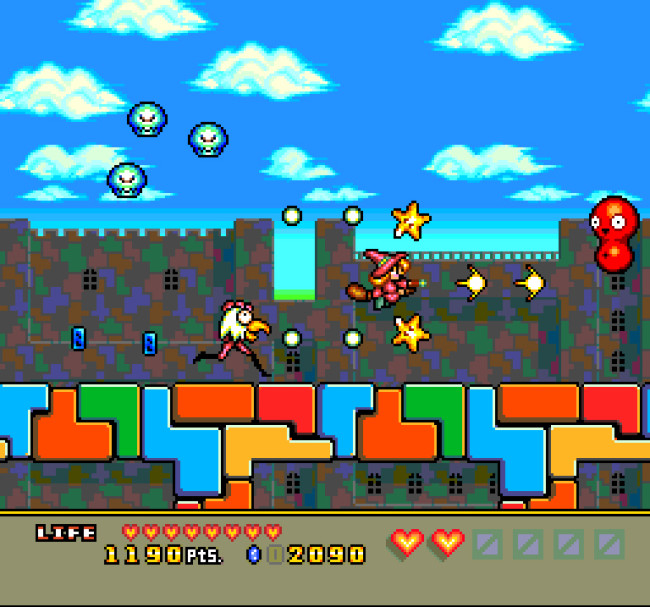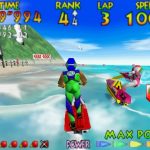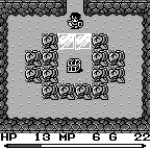TURN TO CHANNEL 3: TurboGrafx-16’s ‘Magical Chase’ is a crazy ride with a crazier price tag

One of the more persistent debates both in my shop in Mayfield and within the retro gaming community is whether or not games that are now worth hundreds, if not thousands, of dollars are actually worth the money. In simpler terms, if you’re going to shell out that kind of money, is the game even any good?
In most cases, it’s a mixed bag, as some games have high price tags due to the sheer popularity of the title, whether it be during its prime or in today’s collector market, earning itself a cult following. At the same time, when I see the price tag on a game like “Color a Dinosaur” for the Nintendo Entertainment System (around $100 for the cart alone, around $300 for a boxed copy, in case you’re wondering and, well, really like coloring pictures of dinosaurs), I scratch my head in bewilderment.
Today, we put a game falling under the category of both rare and highly sought after on the TurboGrafx-16 to the test. Is this game actually good or just a collector’s piece?
Let’s aim for the skies in “Magical Chase!”
“Magical Chase” (TurboGrafx-16, 1993)
Sound: 








Like another unique shooter we played this month, “Air Zonk,” “Magical Chase” has a soundtrack that feels right at home in the glory days of the 16-bit era, with music very similar to the “Mega Man” and “Sonic the Hedgehog” titles of the time. With tracks that are both upbeat and adrenaline-pumping, as well as some more somber and ominous titles, “Magical Chase” contains perhaps the most well-rounded and complete soundtrack of any game on the TurboGrafx-16.
I’ve always regarded the best soundtracks in gaming as those that not only have great tunes, but also great placement of said tunes, and “Magical Chase” has this quality in the bag.
Graphics: 








Many TG-16 titles straddle that fine line between 8-bit and 16-bit graphics but, in the case of “Magical Chase,” if a port of this game showed up on the Super Nintendo or Sega Genesis, I honestly wouldn’t be surprised, nor would the game seem out of place at all. With environments that are both bright and vibrant as well as dark and sinister, “Magical Chase’s” levels take you on a unique adventure, one you don’t see in other shooters of the time, on this console or otherwise.
Some may say that your character lacks detail, which I can see, but the enemies and bosses are all vastly unique, in the same vein of “Air Zonk” in the downright zaniness of it all. I’d like to add that there’s something charming about the pumpkin-headed shop owner who appears in various portions of the game.
Gameplay: 







Straightforward in most accounts, “Magical Chase” follows the tried and true formula for side scrolling shooters. With a background flying behind you, you blast waves of enemies, collecting cards and purchasing power-ups from the pumpkin-headed shop owner. Some folks may find the ability to simply collect enough items to be gifted a power-up easier, but I like the element of strategy here. You can only buy the power-ups you have enough cards for, and you have to decide what power-up you’d like at certain points in the game.
If “Magical Chase” has one flaw, and it is one many shooters of its kind can have, it is that sometimes the screen is too busy. There are too many enemies, and you can often fall victim to some cheap AI in trying to find a spot to hide from an onslaught of firepower. It’s not a huge gripe, and it’s part of a learning curve but, luckily, if you remember patterns in enemy waves, you can have yourself ready, knowing what’s about to come next.
Overall: 







“Magical Chase” is a fun, charming, unique game that, at the time, just wasn’t being done. In an era where side scrolling shooters were, more often than not, futuristic space adventures, “Magical Chase” inserts some quirky witchy flavor into an established genre in need of change. I really enjoyed my time playing this and can see why it is a game that’s sought after for the TurboGrafx-16.
That being said, do I think a game that comes on a card, not a cart, but a card the size of a credit card, is worth anywhere between $1,500 to $4,000? No, I do not. Between 1991 and 1992, this was the bestselling game on the console in Japan before its late U.S. release, so while I can understand how elusive a title this is, the price tag is staggering; if you want a complete copy, you’re now into the $5,000-$6,000 range. Emulate and enjoy, I say.
That does it for me this month. Next month we’re going to take a look at some sports titles, so get ready for that and, as always, game on!



